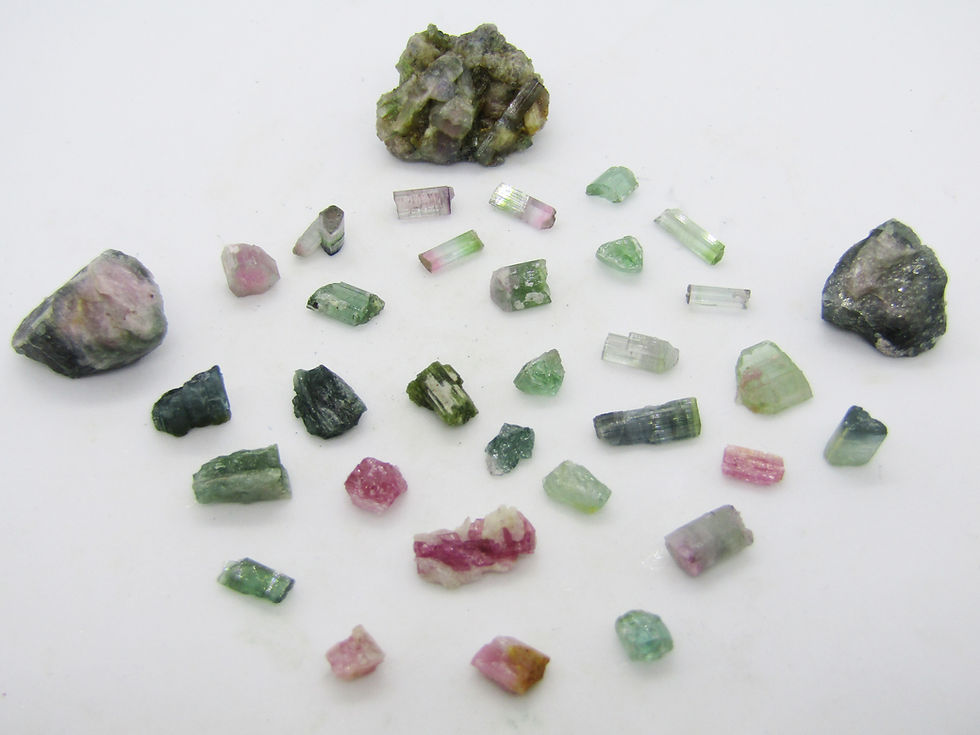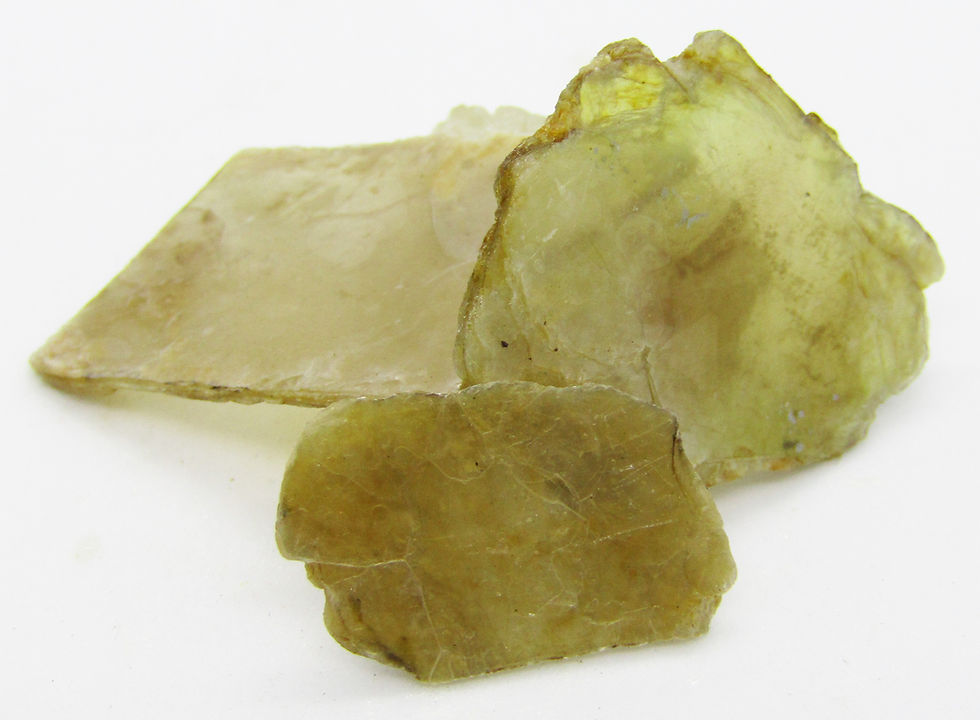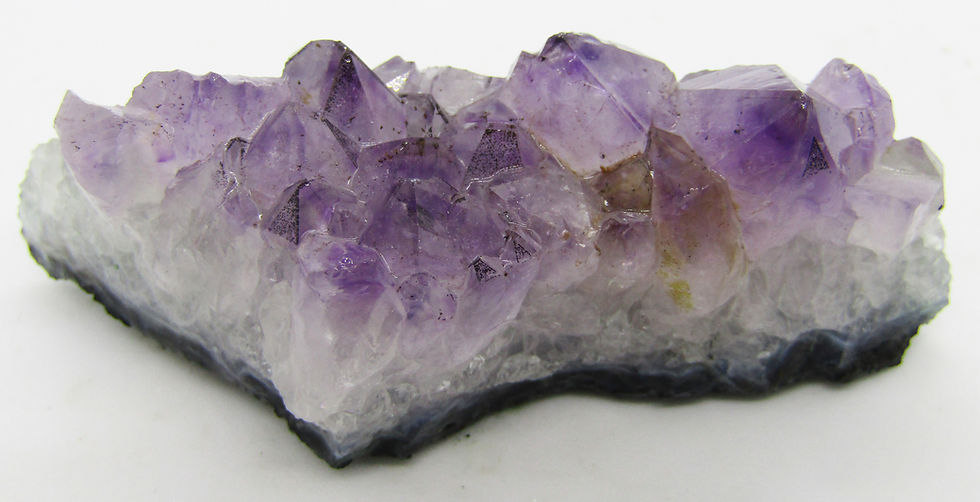
Mineral Identification
DISCLAIMER Please Read
These examples are for identification purposes only. They represent commonly found minerals and do not represent the exact type, quality, size, or quantity of minerals that you will find. You may not find all of the displayed minerals and you may even find minerals that aren't displayed as Mt Mica has many unique minerals as well as the material we add to the New England high-grade/specialties and around-the-world materials is always changing with what we can acquire. This applies to all types of boxes for sale.
We also recommend checking out mindat.org for all of your mineral identification, mining history, and general rock information needs! Type in a specific mineral i.e. "Tourmaline" or a specific mine i.e. "Mount Mica"
Mt Mica Straight Run Box
(also applies to both Dig Your Own buckets at our on-site location)

Image displays smaller sized stones ranging from .5 cm - 4 cm in size. Can come very clear or opaque.

Image displays smaller sized stones, approx. 1 cm in size. Most of the time you will find Garnet even smaller than these in shard form, or in much rarer cases, larger and in crystal form.

Image displays high quality Tourmaline specimens approx .5 cm to 3 cm. Gem tourmaline like these are usually rarer to come across in the Mt Mica Straight run box, though like a lottery, these are entirely possible to find.

Image displays specimens ranging from .5 cm to 4 cm. This is actually purple mica!

Image displays specimens approx. 5 cm in size. Mica comes in little flakes or larger "books" or "sheets" like these and can even be up to 3 - 5 inches in size.

Image displays stones approx. 5 - 6 cm size. Common mineral made of condensed mica and other minerals.

Image displays stones .5 cm to 3 cm in size. These are common within the Mt Mica Straight Run material. More commonly green, but keep an eye out for pink and blue as well.

Image displays stones approx. 5 cm to 10 cm in size. This is the most common mineral in all of our boxes. It can also come in slightly pink blue and green coloration, never bright colors however. Note the green Tourmaline embedded in the center stone. Orange coloration is iron staining.

More Feldspar approx. 5 cm to 10 cm. This mineral will make up approximately 80 to 85 percent of your bucket. Even though it is extremely common, feel free to keep ones that look cool!

Image displays stones 1 cm to 4 cm in size. They can come very small as well, but anything that is pure black like this is Black Tourmaline.
Around the World Box
(also applies to Around the World buckets at our on-site location)
***This also contains common minerals like Feldspar, Quartz, Mica, Shist, Black Tourmaline, etc. you find in the Mt. Mica material above!

Shark Teeth approx. 1 cm - 3 cm in size. Species unknown!

Image displays stones approx. 4 cm - 5 cm in size.

Image displays stone approx. 7 cm in size.

Image displays Quartz Crystal Cluster approx. 9 cm in size.

Image displays specimens approx. 1 cm - 1.5 cm in size.

Image displays specimen approx. 4 cm in size.

Image displays specimen approx. 9 cm in size.

Image displays stones approx. 2 cm - 4 cm in size.

Image displays stones approx. 2 cm - 8 cm in size.

Image displays stone approx. 6 cm in size.

Image displays specimen approx. 6 cm in size.

Image displays specimen approx. 5 cm in size.

Image displays specimen approx. 10 cm in size.

Image displays specimen approx. 8 cm in size.

Image displays stone approx. 6 cm in size.

Image displays specimen approx. 5 cm in size.
New England High-Grade Box
(also applies to $25, $50 and $100 Specialty buckets at our on-site location)
***This also contains common minerals like Feldspar, Quartz, Mica, Shist, Black Tourmaline, etc. you find in the Mt. Mica material above!

Image displays specimens approx. .5 cm - 3 cm in size. These are much more prevalent in our New England High Grade Box than the Mt. Mica Straight Run Box.

Image displays specimen approx. 7 cm in size. Complex mineralization often found within open cavities in the ground called "pockets". Notice the Green Tourmaline in matrix.

Image displays stone approx. 15 cm in size. Careful, these beautiful pink stones can be sharp in spots!

Image displays specimens approx. 5 cm - 16 cm in size. Notice the symmetrical crystal structure. None of these are cut or polished by man!

Image displays specimen approx. 6 cm in size. Hundreds of tiny crystals can be intricately placed on these specimens. The orange coloration is iron staining.

Image displays specimen approx. 9 cm in size.

Image displays specimen approx. 6 cm in size. Notice the pink Tourmaline embedded in the Lepidolite, with Feldspar holding it all together.

Image displays specimen approx. 9 cm in size. Tourmaline can form in weird and interesting circumstances sometimes. This specimen shows green Tourmaline crystals embedded in green Cookeite all holding on to a Feldspar crystal.

Image displays specimens approx. 4 cm - 5 cm in size. These are some higher quality Tourmaline crystals. Note the Watermelon configuration on the left most Tourmaline.

Image displays specimens approx. 4 cm - 5 cm in size.

Image displays specimen approx. 6 cm in size. Beryl is the opaque form of Aquamarine.

Image displays specimen approx. 4 cm in size. More Cookeite. Remember you can often find Quartz crystals and Tourmaline imbedded within Cookeite, due to its complex nature.

Image displays specimen approx. 6 cm in size.
